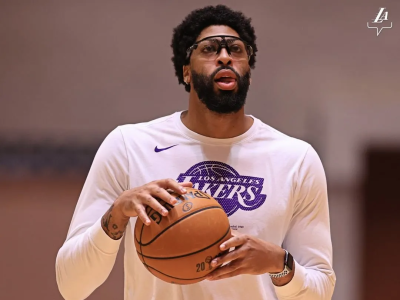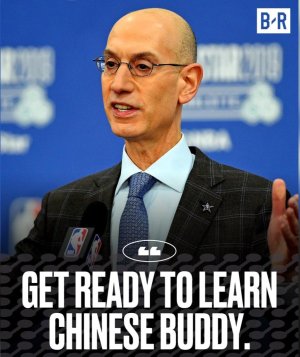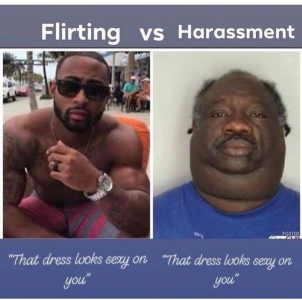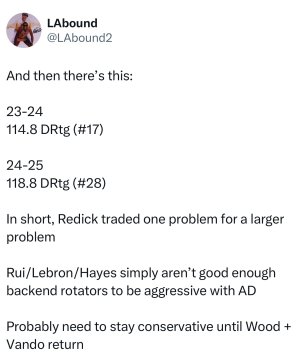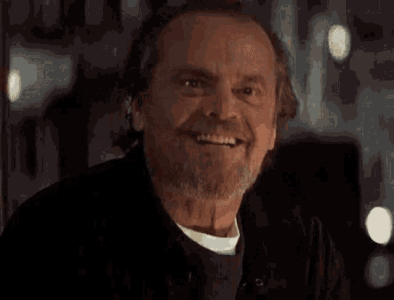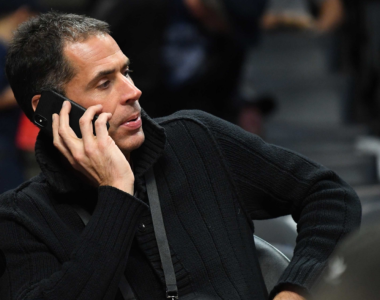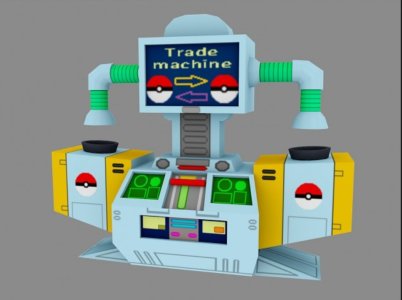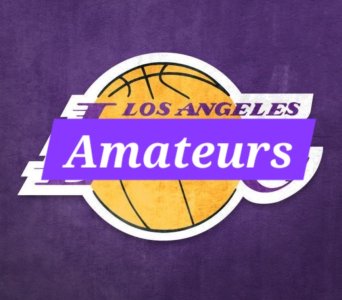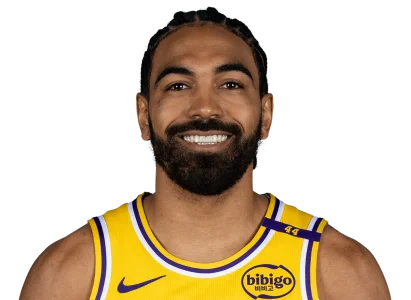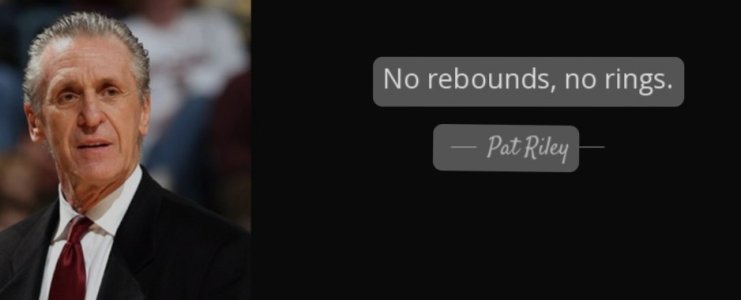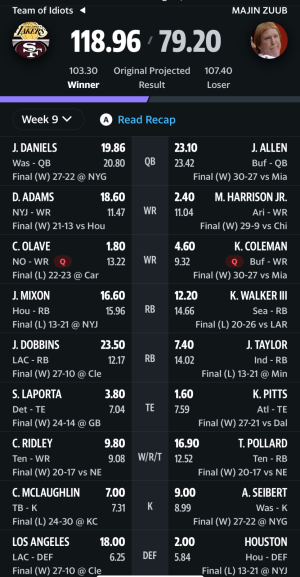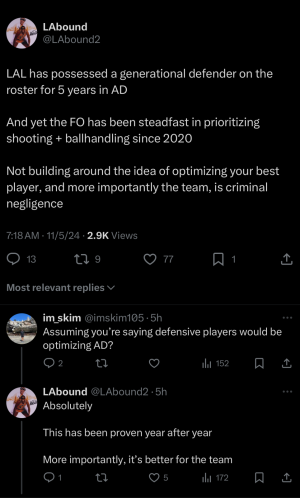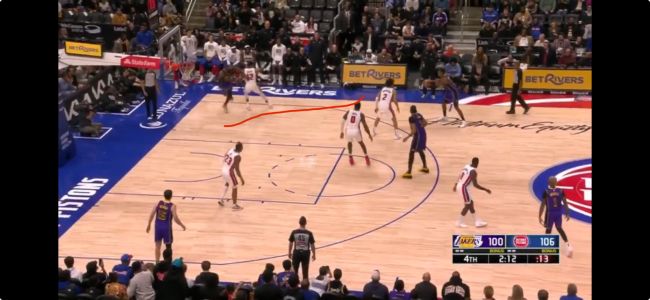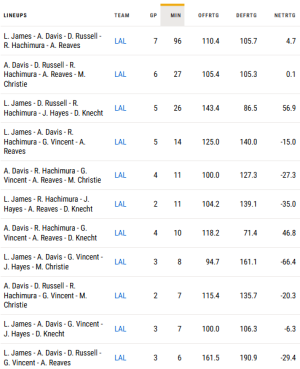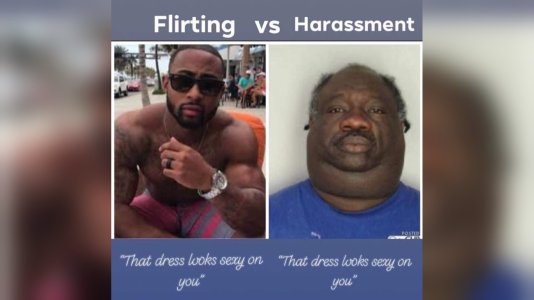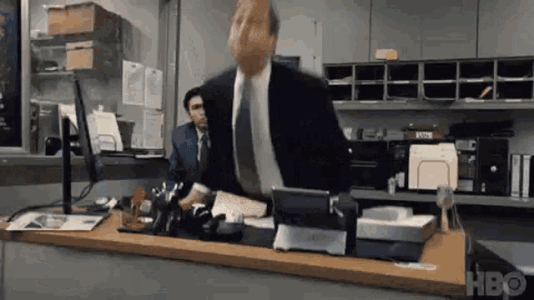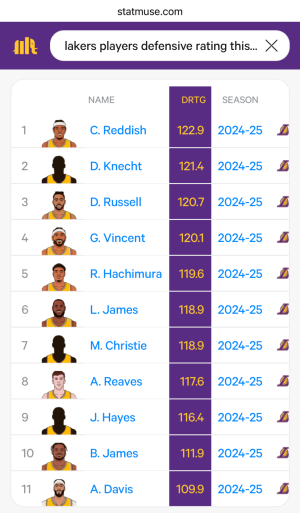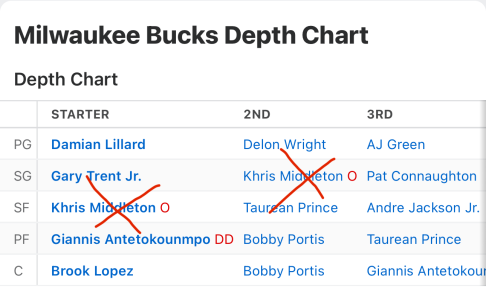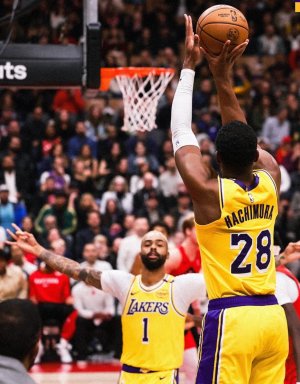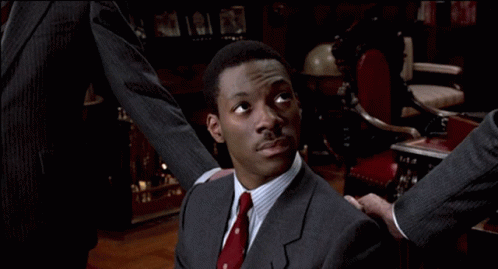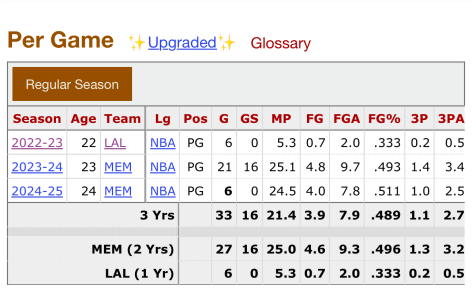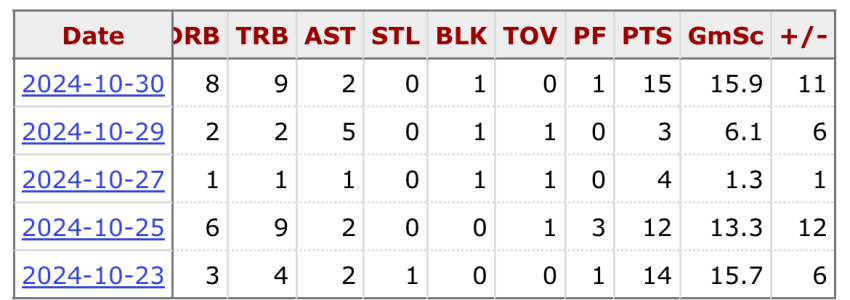Lakers’ premature ending sets up an offseason of questions
In the end, it wasn’t Anthony Davis, Marc Gasol, Andre Drummond or Montrezl Harrell that was the Lakers’ answer to their perpetual question at center.
It was LeBron James.
With the Lakers on the brink of elimination, trailing, 71-52, with 8 minutes, 35 seconds remaining in the third quarter, Lakers coach Frank Vogel desperately turned to a small-ball unit of James, Markieff Morris, Wesley Matthews, Kentavious Caldwell-Pope and Dennis Schröder (with Kyle Kuzma also subbing in) for much of the second half.
The group gave the Lakers life, making multiple runs as they full-court pressed and trapped, cutting the Suns’ lead, which peaked at 29 points, to as few as 10.
But it was too little, too late for the Lakers, as was the case in most of their losses in the series.
Devin Booker scorched Los Angeles for 47 points, an arrival moment for the young star, and Davis’ exit after aggravating his left groin strain five minutes into the game meant the Lakers were once again shorthanded on both ends, similar to Game 5.
Ultimately, the Lakers fell to the Suns in Game 6, 113-100, a premature ending the defending champions couldn’t have imagined as recently as a few days ago, when they led the series, 2-1.
“We fought hard,” Caldwell-Pope said. “I feel like we waited a little too late to give that type of push that we did give. We waited too late. They were up 15, 30, 20, before half. We fought to the end.”
The Lakers ran out of adjustments in Games 5 and 6. To their credit, they tried just about everything: replacing Drummond with Gasol in the starting lineup, giving all 13 rotation players a chance, trapping Booker near half court, throwing out multiple zones, playing faster, deploying five wings and guards.
Some of it worked. Some of it didn’t. They waited too long to adjust in certain situations, like replacing Drummond as a starter, aggressively trapping Booker and trying out the small-ball lineup. By the time the Lakers figured out an effective game plan, the Suns had found their 3-point shooting and Booker took a leap.
“I mean, that’s the playoffs,” Vogel said. “The playoffs change in a heartbeat. Momentum changes overnight with one game, one shot, one possession, one injury. And, I mean, that’s just the way the NBA playoffs are. But it’s a disappointing feeling, for sure. It’s gut-wrenching. And we’ll get back to the drawing board, we’ll take some time away and just turn our attention to next year.”
There was no replacing the impact of Davis’ loss. His absence effectively ended the series. With him, the Lakers held a 2-1 series advantage and an 11-point second-quarter lead in Game 4. Without him, they lost by 30 points and 13 points, the latter margin only that close because of the Lakers’ second-half desperation as their season slipped away from them.
James visibly wasn’t himself either. He had bursts of explosion, like in the second halves of Game 3 and 6, but he couldn’t turn his jets on consistently. He admitted postgame that his ankle injury continued to hamper him.
A healthy Lakers team likely wins this series and, based on the current state of the West, wins the conference. How they’d fare against Brooklyn, Milwaukee or Philadelphia is unknown. But the Lakers would’ve clearly had a shot, especially with the momentum, continuity and chemistry they would have built through an NBA Finals run.
But that scenario exists in an alternate reality. In reality, the Lakers weren’t able to overcome Davis’ injury, as well as James’, Caldwell-Pope’s and eventually Caruso’s, against a conference finals-level opponent. It’s a justifiable excuse — this outcome is probably on the higher end of possibilities for the Lakers given how much roster turnover and injuries they dealt with — even if it doesn’t make the disappointment any easier to handle.
“The one thing that bothers me more than anything is we never really got an opportunity to see our full team at full strength,” James said. “Either because of injury or COVID or something going on with our ballclub this year, we could never fully get into a rhythm. And never really kind of see the full potential of what we could be capable of.”
Vogel added: “I do think we had a group that could repeat this year had it not been for the injuries. We were 21-6 when Anthony Davis goes down, and then Bron goes down shortly after that. It basically derailed our run. And we did everything we can to fight through that, but ultimately, it wasn’t enough.”
These Lakers were built to be less dependent on James and Davis offensively, but that wasn’t the case, at least when it mattered most. The team cratered on both ends whenever James was on the bench, and was obviously unable to replace Davis’ void.
Nex season’s team could look a lot different.
The Lakers have eight free agents: Schröder, Caruso, Drummond, Matthews, Talen Horton-Tucker, Morris, Ben McLemore and Jared Dudley. They could have as many as 10, though, with Harrell able to opt out of his player option if he’s unhappy with his diminished role, and the team likely waiving the non-guaranteed contract of Alfonzo McKinnie.
Only James, Davis, Caldwell-Pope, Gasol and Kuzma are under contract for next season (and Gasol could retire or go back to Spain, as he was rumored to last summer).
One thing is clear for next season’s team: They need to modernize the roster.
The Lakers’ No. 1 need for improvement is shooting. Their shooting performance against the Suns was inexcusable. They shot 29.9 percent on 3s, second-worst among the 16 postseason teams, and 30.2 percent on open and wide-open shots, per NBA.com. Only two Lakers, James and Gasol, shot above league-average from deep in the playoffs.
Phoenix packed the paint, continually disrespecting Los Angeles’ shooters, and the Lakers couldn’t make them pay for it. It got worse as the series went along, coinciding with the Lakers’ worst offensive performances of the season.
Davis’ availability would have surely helped, as his presence draws attention and multiple defenders, but Los Angeles needs another shooter or two in the 38 to 42 percent range. That’s easier said than done, especially with their limited financial resources, but it’s important.
They need centers that can either stretch the floor or protect the rim (Gasol can do both, but he clearly has limitations in certain matchups). Drummond and Harrell may put up impressive counting stats in the regular season, but their limited playoff value was on display in the first round. They cramped offensive spacing and couldn’t protect the paint adequately.
Drummond was eventually played off the floor. Harrell could barely get onto it. Even with Gasol’s defensive miscues, he had seven assists in Game 6 and provided a ton of offensive value with his spacing, which opened up driving lanes. At this point in his career, though, he’s best served as a 15-minute backup who can help run the second-unit offense.
Finally, Los Angeles could use a boost in playmaking, though that could come internally from Schröder and/or Horton-Tucker continuing to grow and develop with more reps in Vogel’s offense and alongside James and Davis. They weren’t able to exploit Phoenix’s sagging defense, or survive when James was off the court.
James and Davis also will be consulted, as they have been since arriving in Los Angeles.
“I think Rob has done such a great job of constructing this team over the last few years that he will continue to do that,” James said. “I will have some input. He always asks for my input. Ask AD’s input. But at the end of the day, we want to continue to get better. And I trust Rob. I trust Kurt. I trust everyone upstairs that does their due diligence and our coaching staff and things of that nature.
“So, obviously the No. 1 thing for us is getting AD healthy. That’s No. 1. It doesn’t matter what changes we make, if we get big fella healthy and he’s back to what he was before the injury, get my ankle back right – which I 1,000 percent I already know I’ll be 100 percent once the season starts in October. And then go from there. That will put us in the best possible chance to be successful next year.
“But, like I said, Rob will do his due diligence and construct this team to the way it needs to be to compete for a championship once again.”
Referencing last season’s overhaul, which turned Danny Green, JaVale McGee, Dwight Howard and Rajon Rondo into Schröder, Gasol, Harrell, Drummond and Matthews, among others, Davis said he hopes most of the roster is back.
“That’s each guy’s decision,” Davis said. “We wanted the same thing last year, but it don’t work that way. Guys have to look out for themselves and their families and do what they think is best for them and you can’t do nothing but respect it. …
“It’s all still fresh, too. It’s all still fresh, guys are not thinking about anything other than getting right and how we could’ve won this series and moved on to the next series and the Western Conference Finals and the Finals so guys gonna be thinking about that for a while. When it’s time to think about their future and the future of our team they’ll make that decision. We’ll reach out and have conversations about it and we’ll go from there.”
The Lakers’ season was primarily undone by health. If Davis and James missed 15 to 20 combined games, and not 63, they are likely a top-four seed and currently in the second round. Davis’ playoff injury changed that calculation, of course, as it lowered their ceiling from a championship contender to a first-round out. Injuries, as Vogel said, derailed the season.
But there were still flaws and limitations with the roster that were revealed as the season wore on. On paper, there was depth, with 13 rotation-caliber players. But it wasn’t the cleanest fit, and certainly wasn’t the most modern construction, especially from a shooting perspective.
Three-point shooting has become a primary ingredient for every championship team over the past decade except for the 2020 Lakers. But that outcome appears to be an outlier, and Los Angeles can’t expect to replicate it again without better shooters flanking James and Davis.
This offseason will be something of a maze for Los Angeles. Even if they wanted to run it back with their core, it’s nearly impossible given the likely $100-plus million luxury tax bill.
The respective market values for Drummond and Harrell are unclear. Schröder likely played himself out of the $20-plus million per season he’s been asking for. Caruso and Horton-Tucker will have multiple suitors and be expensive to retain. The Lakers won’t have many resources to replace those players – mainly the taxpayer mid-level exception ($5 million range) or a trade – making preserving and improving this core a challenge.
The Lakers have a slew of difficult decisions to make over the coming weeks. How they retool their roster will determine how they bounce back from the disappointment.










